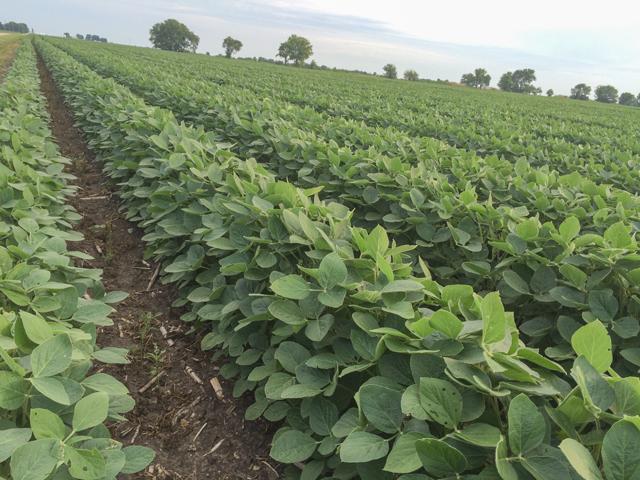Foliar Fertilizer Folly
University Study Finds Foliar Fertilizers Rarely Increase Soybean Yield
JEFFERSON CITY, Mo. (DTN) -- Soybean growers looking to maximize yields by applying foliar fertilizers may actually decrease their crop's overall profitability, according to a 16-state university field trial.
In small-plot trials conducted with six foliar fertilizers that are nationally marketed to soybean farmers, the researchers determined that in the absence of nutrient deficiency, general application of these products did not consistently increase soybean yield or alter grain composition.
"These products are sold and marketed to all farmers as a way to get a couple more bushels, so that's what we wanted to test," said Seth Naeve, University of Minnesota Extension agronomist and one of the researchers who contributed to the study. "We tested these products in environments that replicated the way they are being marketed to farmers. We weren't trying to cover up any deficiencies, and we weren't testing them for that one farmer who just has a unique situation that might find some value in a specific product."
The study, which was conducted over the 2019 and 2020 growing seasons at 46 sites, was coordinated across 16 states, including Arkansas, Florida, Kentucky, Louisiana, Michigan, Minnesota, Missouri, Mississippi, Ohio, Oklahoma, North Carolina, North Dakota, South Carolina, South Dakota, Wisconsin and Virginia. The researchers tested the effects of foliar fertilizer products containing both macronutrients (nitrogen, phosphorus and potassium) and micronutrients (sulfur, manganese, iron and molybdenum). The products were applied at soybean growth stage R3 to align with fungicide and insecticide application.
"We really expected that one or two of these products might work quite well in a number of locations, that there would be a couple rise to the top in at least some environments," Naeve said. "We just didn't see that. We didn't see any significant yield response from any of these products anywhere, meaning that there wasn't enough of a uniform response for any of them to be important at all."
P[L1] D[0x0] M[300x250] OOP[F] ADUNIT[] T[]
Naeve said the study's results reinforce a fundamental of crop physiology: Plants, including soybeans, have evolved to take up water and nutrients through their roots in the soil -- not their leaves.
"Plant leaves have this heavy, thick cuticle that protects them," he said. "Some foliar-applied nutrients could go through stomata, but unless they're nutrient deficient, soybeans really don't want to take up nutrients through their leaves."
The agronomist added that when commodity prices go up, farmers tend to be more willing to try more and multiple products to increase yields.
"But if those products don't do anything for them, they don't gain. They only lose," he said.
Naeve said that in his experience, the only products that generate a positive response regularly are pesticides -- when pests are present.
"Insecticides work when we have insects. Fungicides work when we have fungi," he said. "They're huge hammers that absolutely work. They drive profits. I haven't found non-pesticidal products other than soil-applied fertilizer or the occasional inoculum that you can apply to soybean that makes you money."
The researchers went as far as to say that the foliar fertilizer products tested in their study and similar products should not be recommended to soybean farmers in the absence of visual symptoms of nutrient deficiency.
"Now, we can't say that they're not going to work for anybody anywhere, but as advertised, I would say that blanket general prophylactic use of these products is something farmers really need to think twice about spending their money on," Naeve said. "If you want to spend an extra $20 an acre, do some grid soil sampling that will help you manage those acres more precisely."
The research, published in Agronomy Journal, can be found here: https://acsess.onlinelibrary.wiley.com/….
Jason Jenkins can be reached at jason.jenkins@dtn.com
Follow him on Twitter @JasonJenkinsDTN
(c) Copyright 2023 DTN, LLC. All rights reserved.






